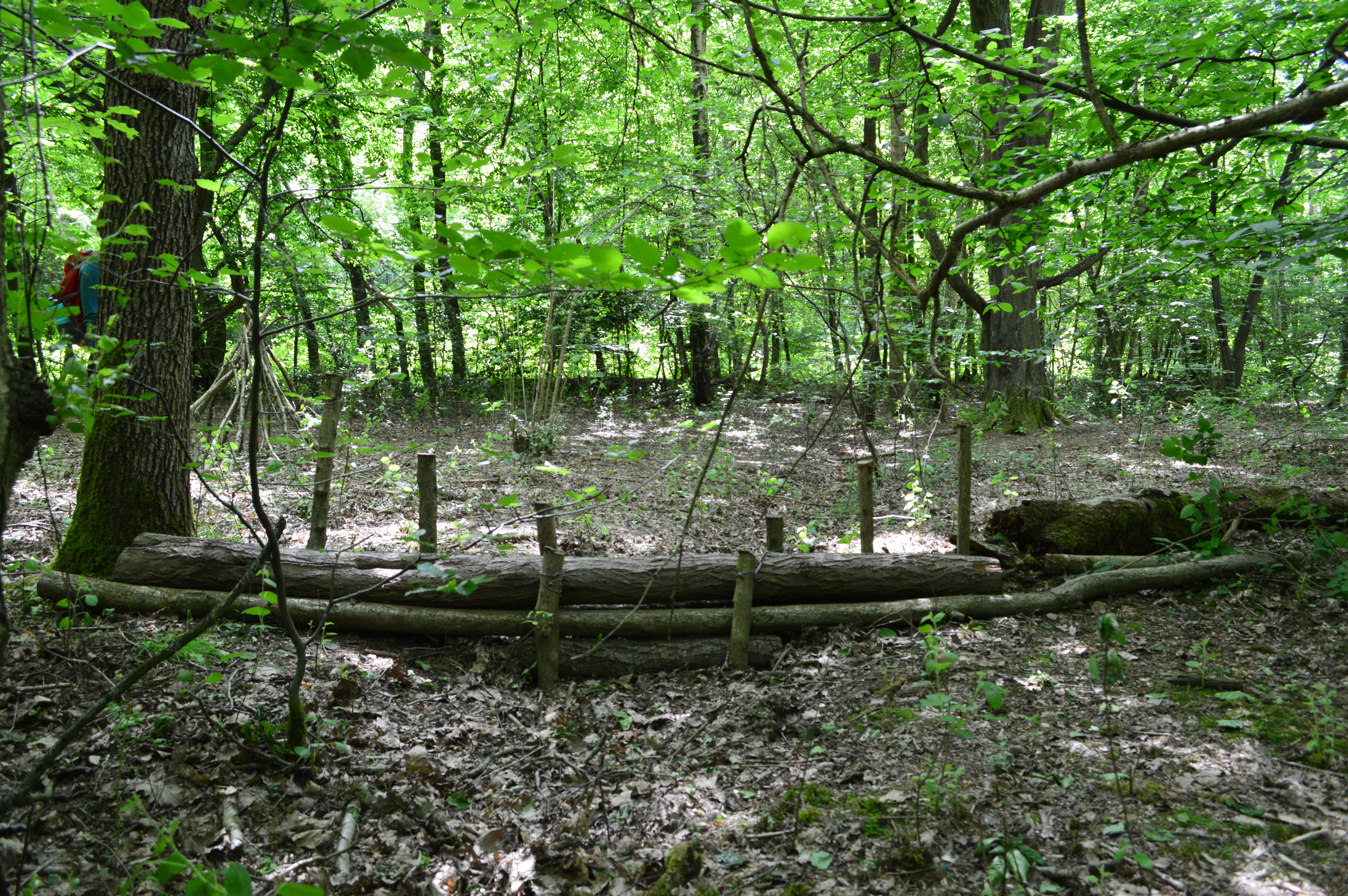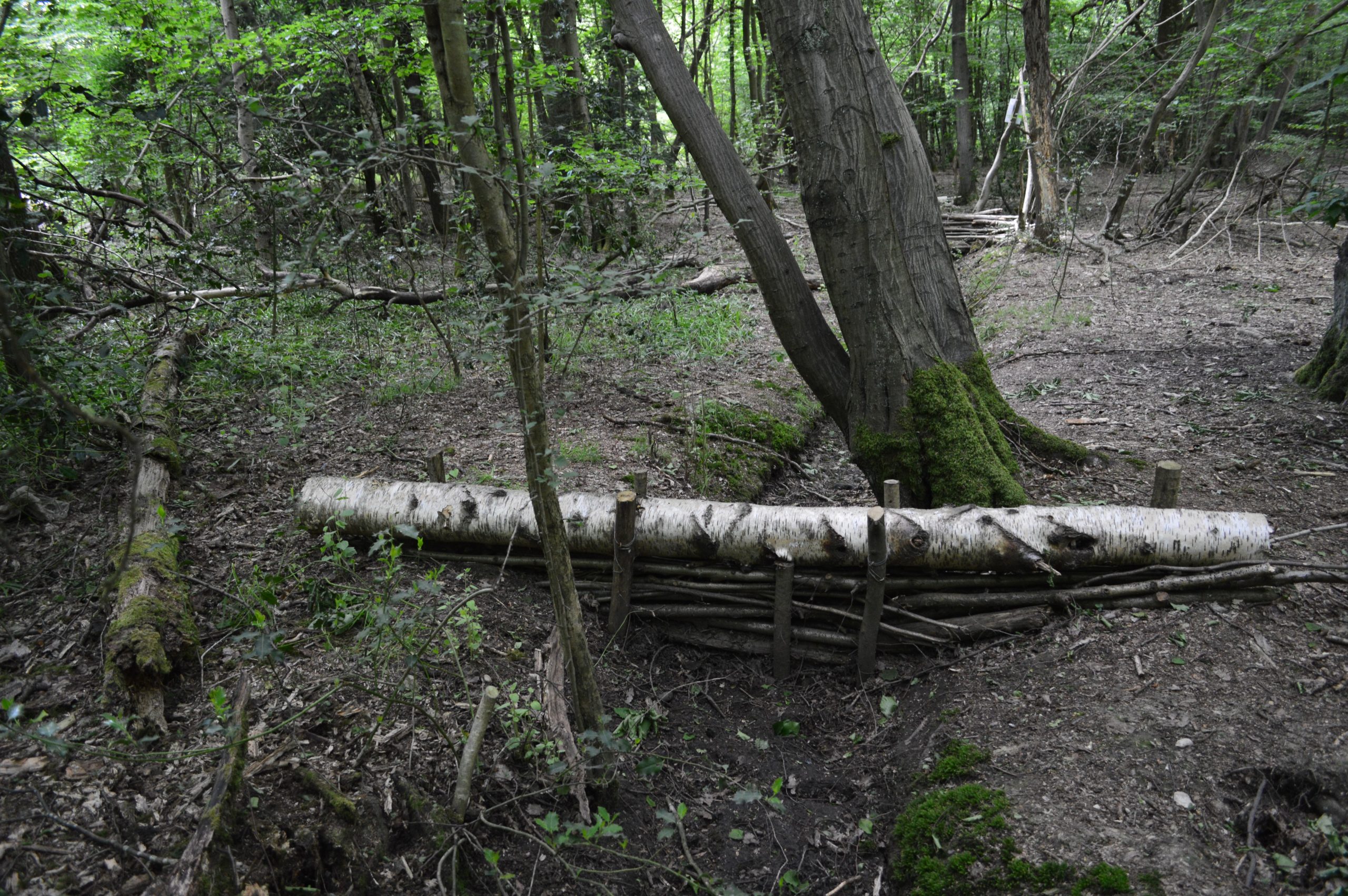River Pinn, Park Wood: Slow the Flow
Monitoring of Natural Flood Management in Park Wood
The River Pinn Park Wood Natural Flood Management project was one of four Community Scale NFM pilots funded by DEFRA and delivered by Thames21 in partnership with Hillingdon Council and the local community between 2018 and 2021.
Fifty leaky dams were installed in Park Wood, Hillingdon, with the aid of local volunteers, some of whom also sat on the project steering committee.

Modelling was carried out to assess the effectiveness of these leaky dams at reducing flood risk. This model was greatly supported by detailed reports from volunteers from the local Flood Action Group who documented the behaviour of the leaky dams during rain and high flow conditions.
The local community were also invited to submit their observations and photographs of the dams through the Slow the Flow app, developed for the project. Wider impacts of the dams on local biodiversity and changes to habitat and physical characteristics of the stream were assessed by surveys of the local flora and Modular Rivers (MoRPh) surveys. Low cost water level sensors were also trialled as part of this project in the hope that they could also inform us about changes in water levels in the woods resulting from the leaky dams.
Summary of project findings
In summary, modelling of the dams concluded that their contribution to flood risk reduction was minimal (5% reduction in peak flow in a 1:2 year return period rainstorm event, 3% reduction in a 1:30 year event) with only a small delay in peak timing (1-3 minutes).
However, the dams potentially provide other important benefits such as:
- Sediment trapping – flood risk is potentially reduced by trapping sediment known to block the culvert immediately downstream of the wood.
- biodiversity benefits – by creating a more diverse channel with areas of sediment accumulation and scour, as well as creation of wetter areas by holding back the water.
Unfortunately, insufficient time had passed between installation of the dams and the final biodiversity and habitat surveys, so at this early stage it is not possible to detect significant and conclusive changes to flora and channel morphology.

This is because the channels in Park Wood are ephemeral, which means they only contain water in the winter when the ground is wetter, or during sudden summer storms. Surveys carried out as part of this project therefore establish an ‘as built’ baseline against which future surveys can be evaluated, as detailed in the report with full results.
This project highlights the importance of working with local communities to deliver environmental improvements. The local knowledge and dedication of local volunteers in recording behaviour of the dams, mending structures and reporting vandalism was invaluable and above and beyond what could be achieved by project officers alone. Volunteer contribution to ongoing dam maintenance beyond this project through adoption by the existing woodland habitat maintenance volunteer group was also invaluable.
However, a key lesson from partnership working is not to underestimate the time required to build and maintain relationships with local volunteers. In this project local community members formed part of the steering group and careful management of roles and expectations is required, especially around decision making. Additional challenges for delivery of NFM in public, urban environments include vandalism of NFM structures and monitoring devices.
For more information please contact our NFM Programme Manager by emailing: Stephen.Haywood@thames21.org.uk



